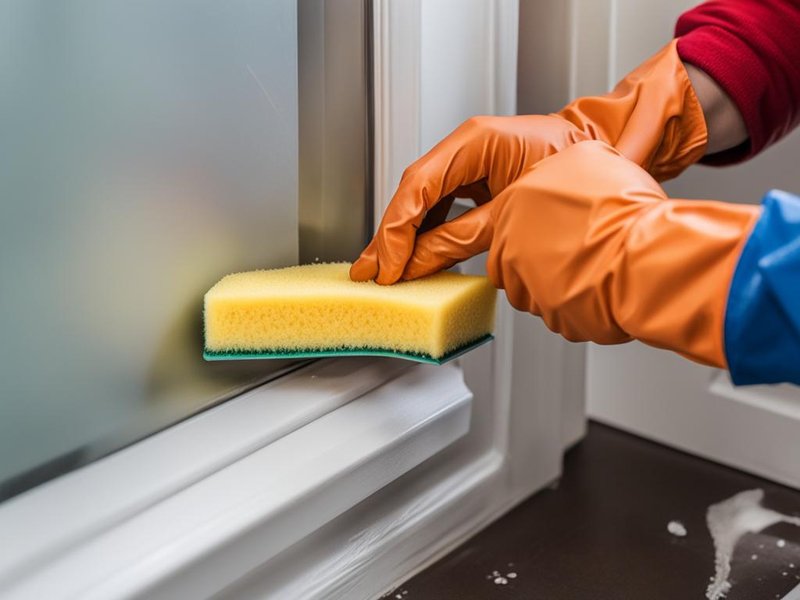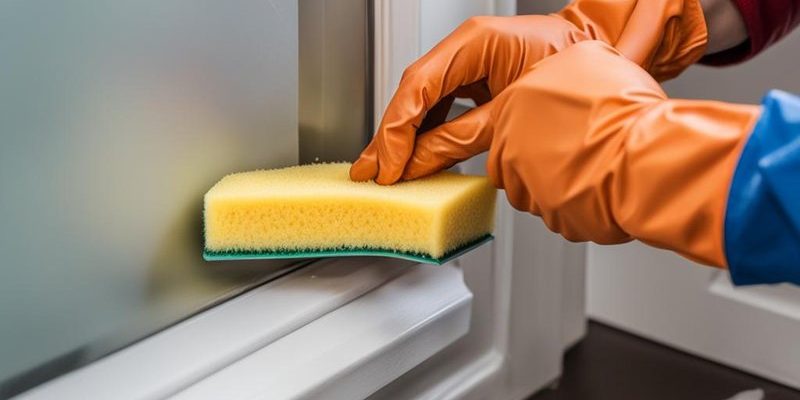
Here’s the thing: you can’t just blast a textured fiberglass door with the same cleaner and rag you’d use on smooth steel or wood. The crevices around the hardware trap everything from pollen dust to sticky fingerprints. If you skip the details, you end up with sparkling paint but corroded, grimy fixtures. So, how do you get that hardware to gleam—without damaging your door, paint, or the hardware finish? Let me walk you through the right way to get the job done, whether you’re tackling a shiny black Baldwin doorknob or a brushed-nickel strike plate.
Why Textured Fiberglass Doors Need Special Cleaning Care
First up, let’s talk about what makes textured fiberglass so unique. These doors are designed for both strength and aesthetics—they mimic the look of real wood, but they’re built to withstand weather, warping, and heavy use. The *textured surface* is what gives them character, but it’s also a magnet for dirt and grime, especially around the hardware.
If you use harsh chemicals or abrasive sponges, you risk scratching the texture, dulling the finish, or even chipping the paint. To make things trickier, the hardware—whether it’s stately brass or fingerprint-resistant stainless—often has its own cleaning rules. Every time you hit those bumps and crevices, dust and debris sneak under the edges and behind the plates. The bottom line? A little patience and the right technique go a long way.
Here’s something that often surprises people: cleaning a textured fiberglass door isn’t just about looks. If dirt builds up around hardware, it can actually interfere with the code locking systems, jam the latches, or even mess with how well the door seals. A clean door and hardware combo isn’t just pretty—it works better and lasts longer.
Gathering the Right Tools and Cleaners
Before you dive in, it helps to round up the right supplies. You might be tempted to grab any old spray and sponge, but trust me, it pays to be picky. Here’s a quick list of tools and cleaners that are safe for both your textured fiberglass door and its hardware:
- Microfiber cloths or soft rags: These lift dirt without scratching.
- Soft-bristle toothbrush: Perfect for getting into grooves and around hardware edges.
- Mild dish soap: A drop or two in warm water cleans without damaging finishes.
- White vinegar (optional): Helps remove mineral deposits or stubborn spots but always dilute it.
- Spray bottle: For controlled misting, not drenching.
Skip anything labeled “abrasive” or “industrial strength”—those might chew through your hardware’s finish or leave your door looking worse, not better. And ditch the bleach. It can discolor both fiberglass and most hardware finishes, especially the trendy matte black or brushed bronze styles.
When you’re picking your cleaning solution, always test on a hidden spot first. Hardware finishes are pickier than they look, and what’s safe for your door might not be for your deadbolt.
Step-by-Step Cleaning: The Safe Way
Let’s get right into how to clean the hardware on your textured fiberglass door without causing headaches. Honestly, this isn’t about elbow grease—it’s about precision.
- Dust off first: Use a dry microfiber cloth to gently wipe away loose dust from the hardware and around it. Don’t forget the hinges or the area around the lock code pad.
- Mix your cleaning solution: In a small bowl, add a few drops of dish soap into warm water. Dip your cloth in, then wring it out well—you want damp, not dripping.
- Detail the hardware: Take your damp cloth and wipe every surface of the hardware. If there’s stubborn dirt in crevices, use a soft toothbrush to gently scrub—work in small circles especially around screws and latches.
- Rinse and dry: Use a separate clean, damp cloth to remove any soapy residue from the hardware and nearby door area. Always dry with a soft cloth to prevent water spots or streaks.
Pro tip: If your hardware has visible buildup or sticky spots, dip your toothbrush in diluted white vinegar for a little extra cleaning power. Just avoid soaking electronic keypads or letting liquid seep behind plates.
Take it slow, and don’t skip the drying step—dampness left on fiberglass or hardware can leave marks, especially if you have hard water.
How to Avoid Damaging Your Door or Hardware Finish
Here’s the part where a bit of caution pays off. It’s easy to get enthusiastic and scrub too hard, but both fiberglass doors and hardware finishes have their limits. So, what should you watch out for?
Stay away from steel wool, rough sponges, or anything you wouldn’t use on your glasses. Those textured grooves might look tough, but they scratch surprisingly easily. And with hardware, you need to be extra careful—scratched finishes can lead to corrosion or ugly spots faster than you think, especially if you’re in a humid area.
You might be wondering if it’s okay to use a “universal” cleaner or those all-in-one wipes. For most Schlage, Kwikset, or Yale smart hardware, the answer is no. These wipes often contain chemicals that eat away at patinas or cause electronic issues. For keypad entry locks, keep all moisture away from the number pad and battery area—liquid can sneak inside and short things out.
If you ever see hazy streaks or white residues after cleaning, it means a cleaner was too strong or wasn’t wiped away completely. Go back over the area with plain water and a soft cloth.
Dealing With Rust, Tarnish, or Sticky Spots On Door Hardware
Even with careful cleaning, sometimes you’ll spot a bit of rust or stubborn tarnish—especially on older hardware or brands that haven’t been cleaned in a while. Don’t panic; most of these problems can be fixed if you catch them early.
- Light rust spots: Try dabbing the area with a cloth dampened in diluted white vinegar. For tougher spots, a paste of baking soda and water (applied gently with a toothbrush) can help. Don’t use vinegar on brass or oil-rubbed bronze hardware as it can strip the finish.
- Tarnished brass: Use a brass-specific polish, applying with a soft cloth and buffing to restore shine. Always read the label—some polishes can stain fiberglass or get stuck in the door’s texture.
- Sticky residue: If tape or glue left a mark, try rubbing with a bit of olive oil, then wiping with warm soapy water. Never use harsh solvents like acetone or paint thinner—these can melt the fiberglass or cloud your hardware finish.
If you have a code pad or smart lock, replace batteries before cleaning if access panels might get wet—this lets you check for corrosion or leaks. When in doubt, stick to gentle methods and patch test first.
How Often Should You Clean Door Hardware?
A lot of homeowners only think to clean their front door hardware when something looks off or stops working: the keypad needs a reset, the latch jams, or the finish looks dull. But regular cleaning—once a month in most homes—keeps everything working smoothly and looking great.
If your door is exposed to the elements (think pollen in spring, salty air near the coast, or lots of sticky summer hands), you might want to wipe hardware weekly, especially touch points like knobs or lever handles.
For code locks and anything powered by a battery, quick monthly checks help you spot leaks or lint before they cause bigger issues. Just think of it as routine maintenance—like syncing your phone or cleaning lint from a dryer trap.
If you notice streaky fingerprints or dust more often, you’re not alone. Dark hardware and deep wood-grain fiberglass styles tend to show every touch. A quick swipe with a dry cloth can keep things looking polished between deep cleans.
Comparing Cleaning Methods: Textured Fiberglass vs. Smooth Doors
You might be curious if textured fiberglass really needs different care compared to, say, smooth steel or traditional wood. The answer is: yes, and here’s why.
On a smooth surface, dust and spills mostly sit on top, so a quick wipe gets the job done. Textured fiberglass, on the other hand, traps grime in every dip and grain, especially around fasteners or where the hardware meets the door. If you use too much liquid, it can pool in the grooves—leading to water spots or even swelling in some composite core doors.
Insight: If you ever have to replace your hardware or install a new code lock on a textured fiberglass door, take a photo of the area before you remove anything. That way, you can double-check you’ve cleaned and resealed every edge.
Universal tricks—like using hard toothbrushes, DIY chemical concoctions, or one-size-fits-all sprays—just don’t work as well on textured fiberglass. That’s why the safest method is always a gentle, targeted approach, using tools and cleaners designed for delicate finishes.
Long-Term Care and Prevention Tips
If you want your textured fiberglass door and hardware to last, a little prevention goes a long way. Here’s what I suggest from experience:
- Apply protective wax: Some fiberglass doors (and a few hardware brands) allow for a thin layer of carnauba wax or door polish. This can keep both surfaces protected from water spots and UV damage—just check your manufacturer’s guide first.
- Check seals and screws: Every few months, look for loose hardware, missing screws, or worn gaskets. Tighten anything that rattles and replace broken weatherstripping right away.
- Keep a soft brush handy: Quick dusting, especially after storms or pollen-heavy days, goes a long way. A soft paintbrush or even a makeup brush is perfect for detailed grooves.
- Schedule a deep clean: Mark your calendar to do a thorough cleaning with every season change. This keeps grime from building up and makes the job easier in the long run.
It might sound like a lot, but once you make it a habit, cleaning your door hardware takes just a few extra minutes. It’s a small effort for a big payoff—a door that looks sharp, works flawlessly, and makes a solid first impression every time you step in or out.
Wrapping Up: Keeping Your Entryway Beautiful and Functional
Caring for the hardware on a textured fiberglass door doesn’t have to be complicated, but it does require the right tools, a gentle touch, and a bit of patience. With regular cleaning, attention to detail, and a few smart habits, you’ll prevent grime from dulling your hardware and make sure your door keeps working as smoothly as the day you installed it.
Remember, your front door is more than just an entry—it’s the handshake your house offers the world. Keeping both the door and its hardware clean is a simple, satisfying way to protect your investment and keep things beautiful for years to come. So next time you’re wiping fingerprints or buffing a code lock keypad, take a minute to appreciate the difference a little care makes.
